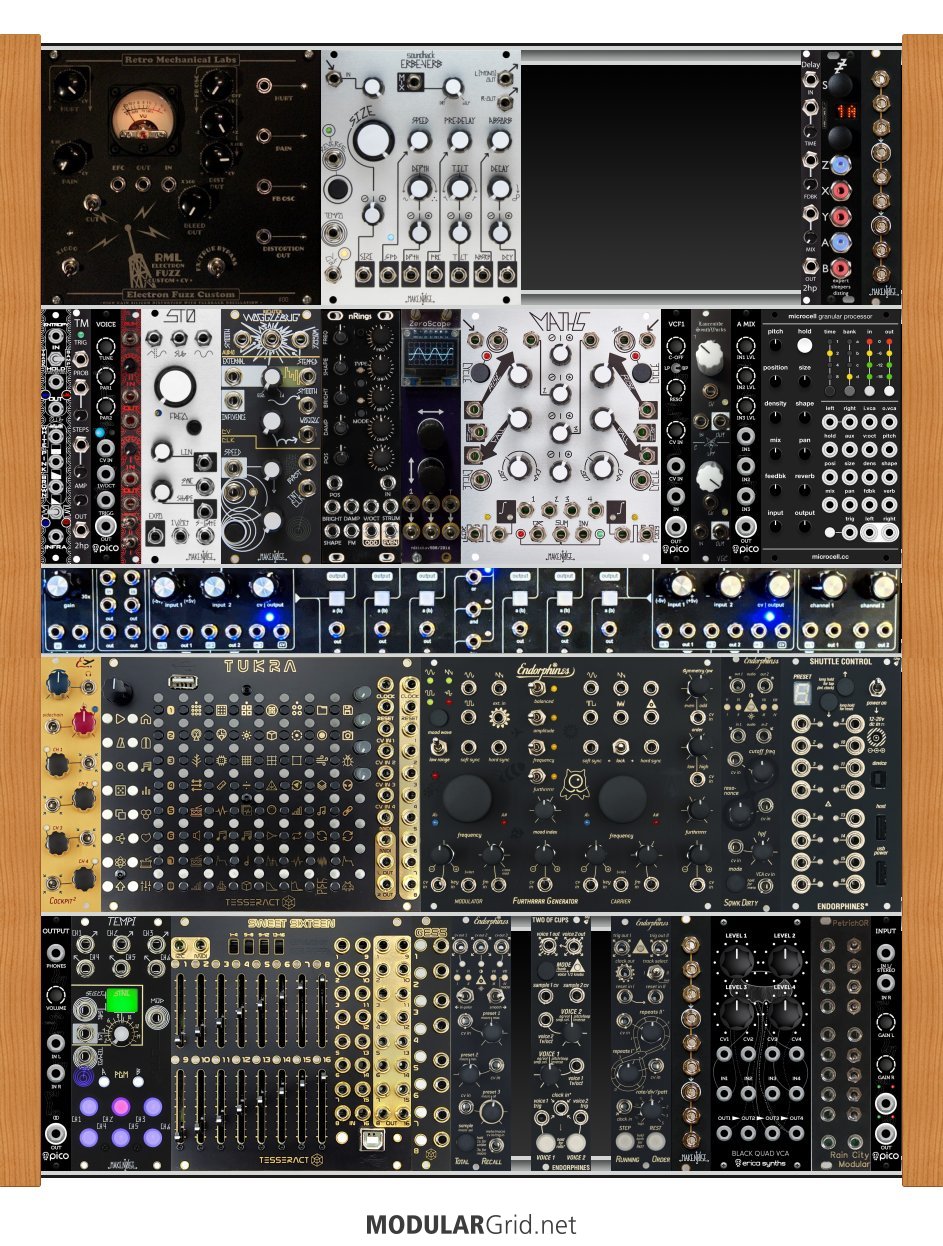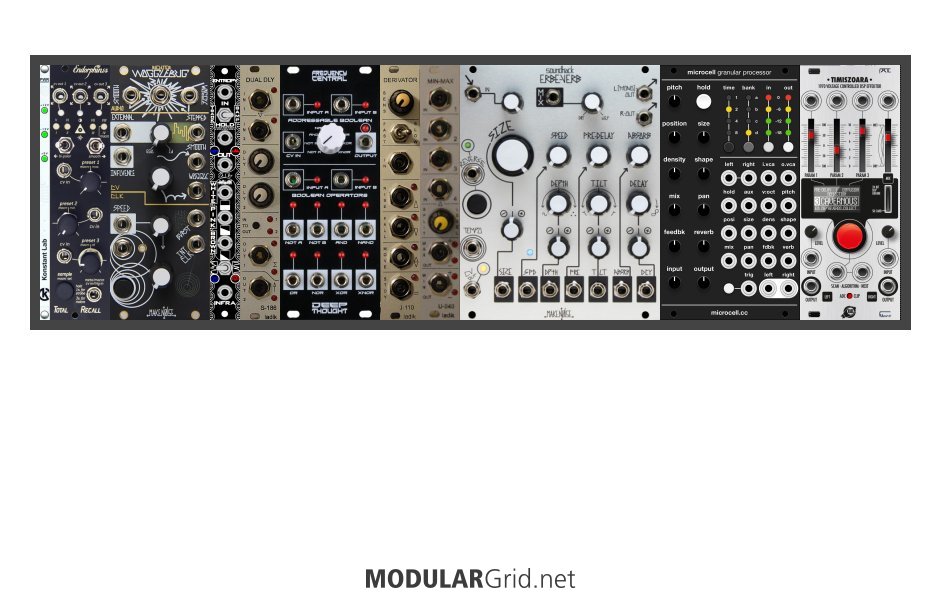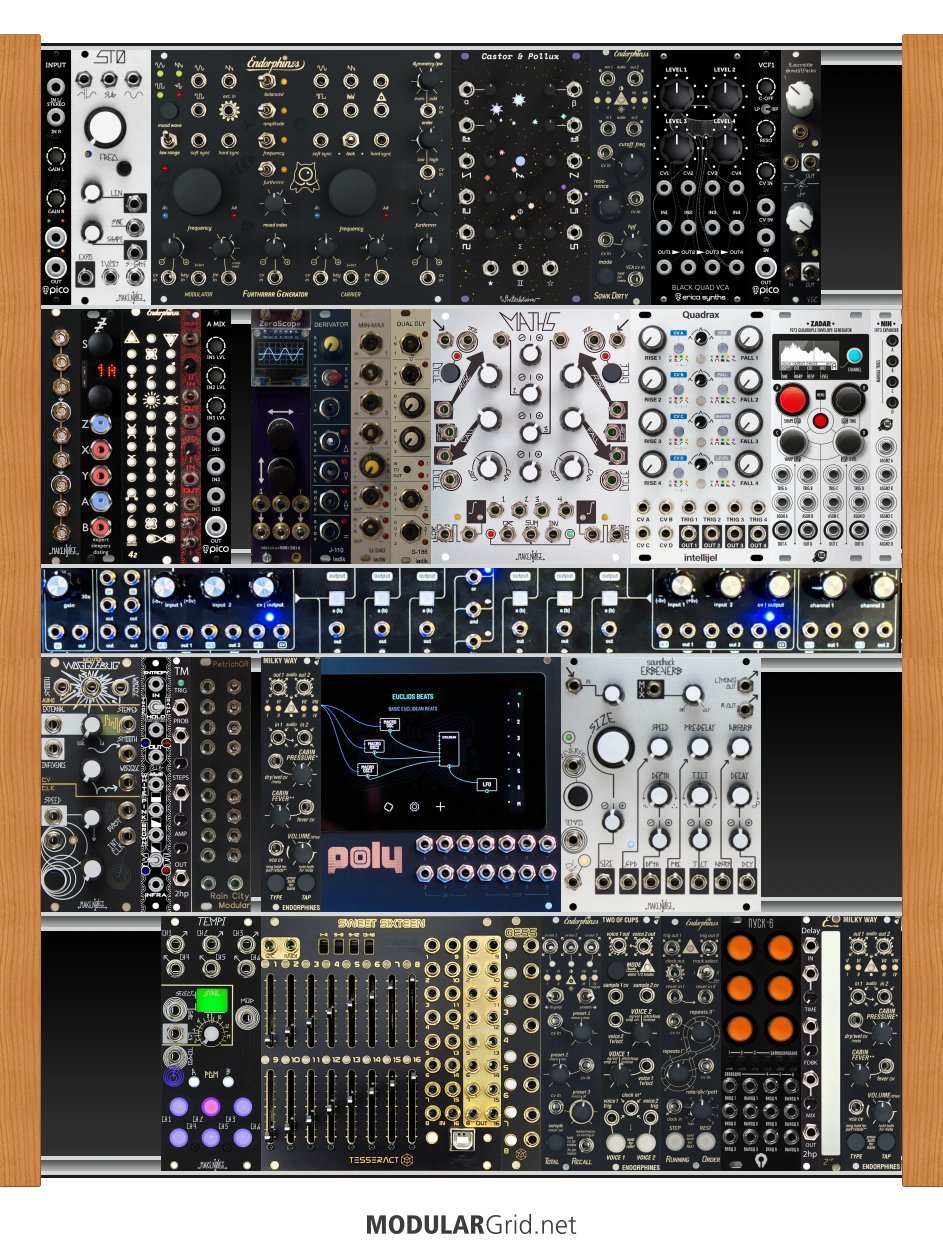OK...I did two variations of this. The first one is made up of nearly everything save for the swap of the Xaoc Warna for the original diode OR (the Warna can do what it does, PLUS it has a buffered mult in addition to the two ORs) and the Doepfer A-119 for the Erica INPUT (the INPUT has no envelope follower, so if you want to control something with the amplitude contour of an external instrument, the Erica module would be the wrong choice).
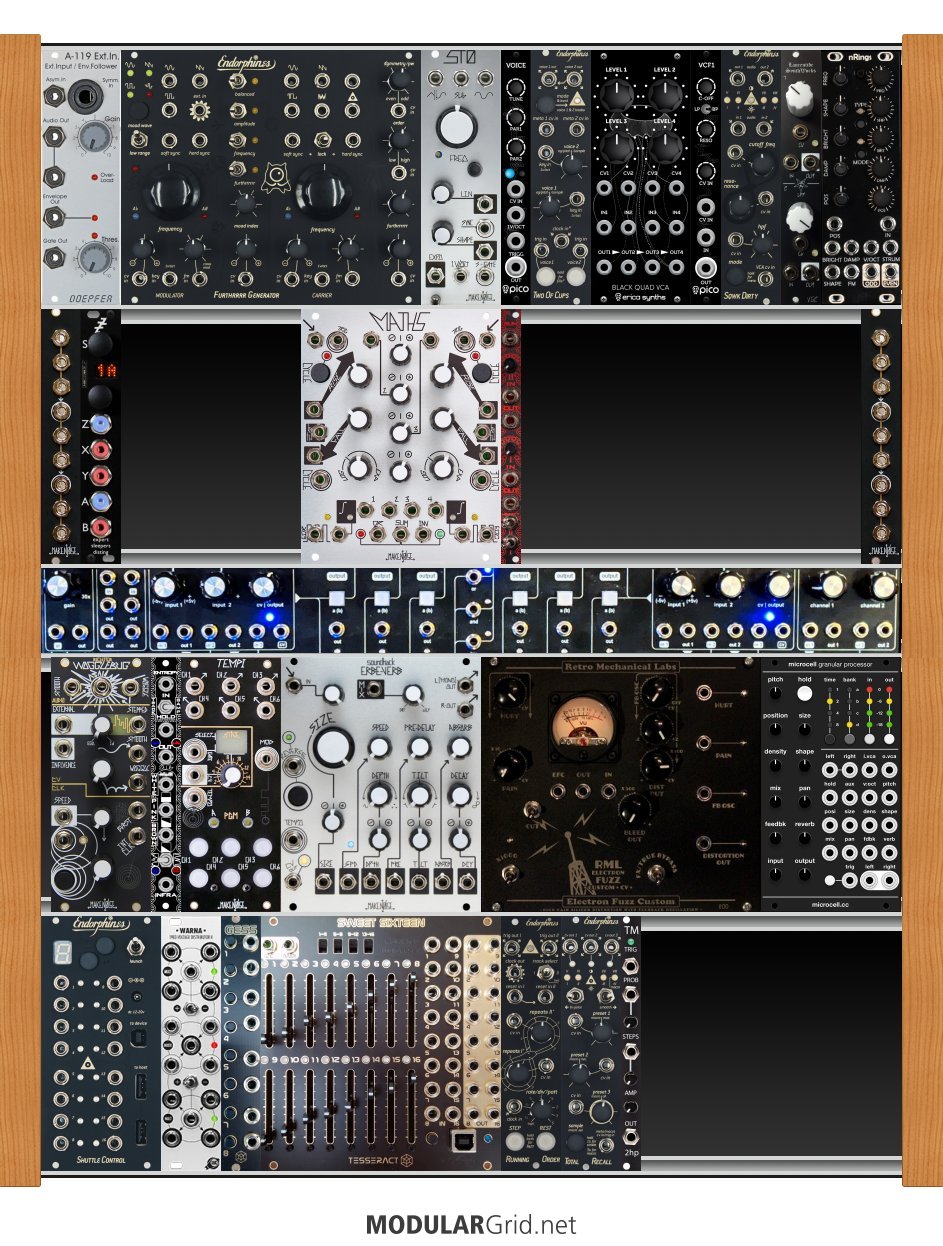
After removing the Tukra and rearranging things for a better workflow, you'll notice all of the open space in the second row as well as the big hole at the right end of row #4. Also, I did dump the Erica A-mixer and the OUTPUT, plus the 2hp delay and the Endorphin "stereo" mixer (which it's not...it mixes stereo signals, but if you want to pan a mono signal, you're screwed, and I also consider 3.5mm TRS cords to be a bad idea when in use amongst buttloads of 3.5mm TS ones). Top row is "voicing" (sources and filters, plus a quad VCA for amplitude control), second should be "modulators", third is randoms and FX, bottom is sequencing, for the most part. At this point I finally "snapped" and did some serious reworking. Not too much, because I was still working to keep as many of your modules in the build...but I DID pump up some needed things in all of this new space. So what eventually resulted was:
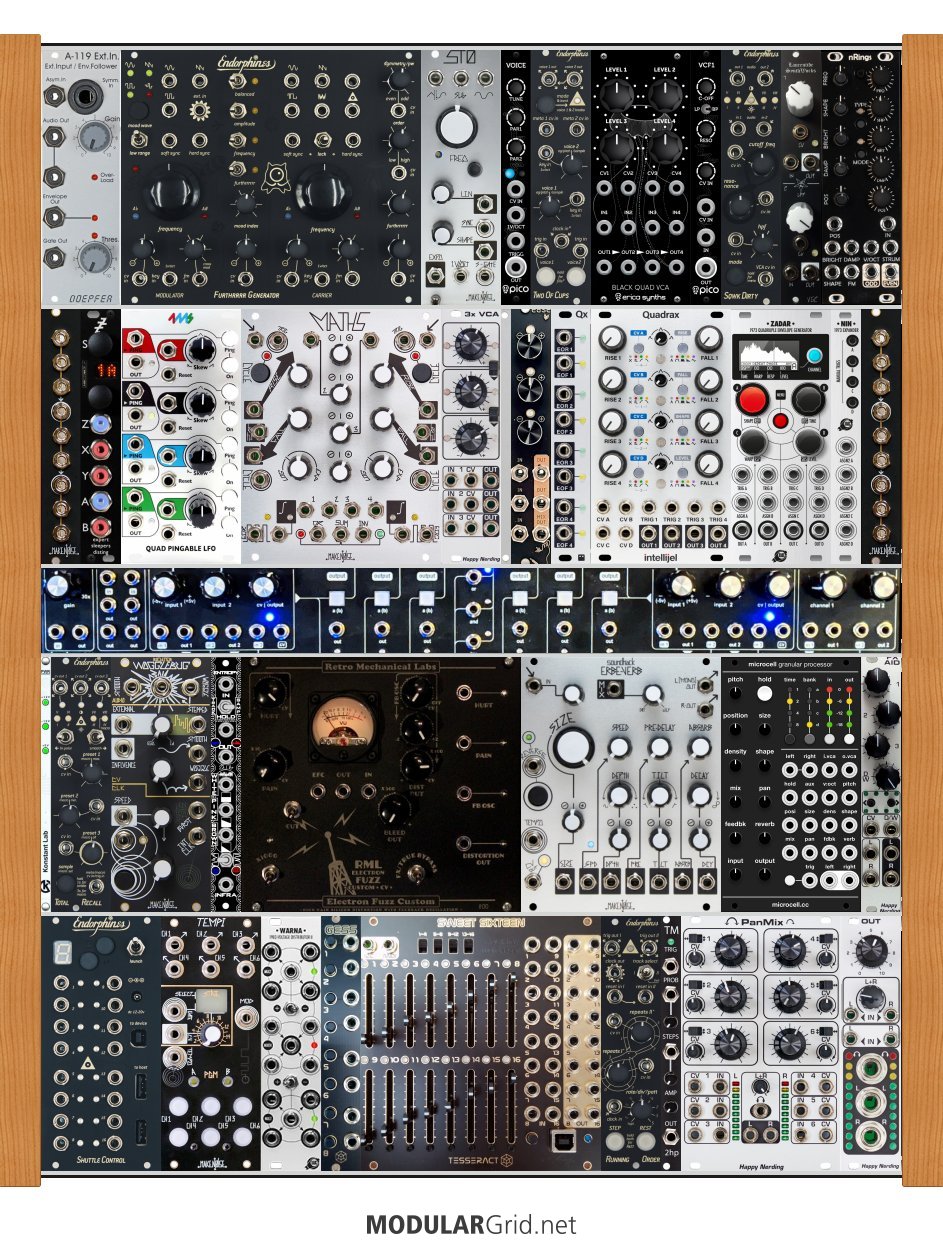
Row one stayed the same as my initial "open" build. But row two got some 'roids! From left to right, there's one of your mults, the Disting, and then there's a 4ms QPLFO, which is a quad LFO with tap tempi and RIDICULOUSLY long possible cycle times. The Maths follows this, then I did some swapping for the mix/att zone so that you now have three linear DC-coupled VCAs for amplitude control over mod signals, and a triple attenuverter/mixer from Tenderfoot for manual levels, inversion, etc. Then I dropped in a Quadrax/Qx pair for two-stage envelopes (and a lot of other screwy trickery!), a Xaoc Zadar/Nin pair for the four stage ones, and lastly, the other mult. MUCH better! This gives you four LFOs, eight EGs (with the ability to swap Quadrax EGs for LFOs via loop functions), plus a proper VCA/attenuverter complement along with the other things such as Maths).
Row three has all of your random sources on the left (along with a Konstant Labs PWRchekr) and FX on a rather long right end (I'd really like to chuck the RML fuzz...it's simply too damn big for a "one trick" module!) that now has an FX Aid at the end, which works with something in the next row. As for that fourth row, it's mainly "control"...clocking, MIDI, and sequencing...except down at the right end, where you now have a REAL stereo mixer (6 ins, 2 out, CV over either VCAs or panning) and a matching Happy Nerding OUT, which gives you your isolated 1/4" jacks (again...trying to avoid 3.5mm TRS plugs), 1/4" headphones, AND a second stereo input. Remember that FX Aid? This would allow you to fly the FX aid in in parallel (by using a couple of stackables to split the PanMix's output to the first OUT input and the FX Aid's inputs, then mixing the "paralleled" FX via the OUT's second input), which should give you a much better result at your output than you'd get with just thruputting the mixer through the FX and then futzing with the wet/dry balance. Much less fiddly!
Not a bad case choice, btw...I think Pitt's discontinued these, which is a shame. Sure, they were (are, if your can find a new one) spendy, but the "utility row" is a very useful addition that addresses a few needs. And I love the Buchla-esque curved design!


